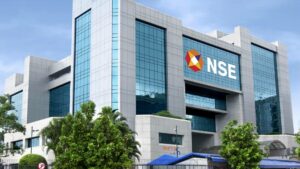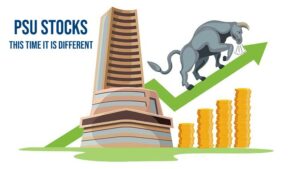Those of us who have spent more than 10 years in the equity market may see the stock market returns in 2021 in resemblance of what we saw in year 2010. It was also the second year of emerging from a deep stock market correction in year 2008. Year 2009 was great year of equity return and even 2010 till October equity market gave phenomenal return. Even in current phase, equity market recovered from the deep correction of first quarter of 2020 generated good returns in 2020 and exceptional return in year 2021. While past performance does not necessarily predict future results, being an active equity investor does require understanding historical moves.
Now in 2022, amid hope that the current variant of coronavirus will soon become endemic from pandemic as vaccines are used widely baring few exceptions, investors may find it tougher to generate the kind of stock market returns that they saw last year.
A sense of return can be gauged from the performance of listed company. Among 3000 odd actively traded stocks on BSE, in year 2021 we saw more than 50 stocks going up by 10 times, or 1000 per cent. The best performing stock for 2021 was Flomic Global Logistics, which moved up from Rs 1.95 at the start of the year to Rs 188.15 at the end of the year, moving up by almost 10 times. So a one lakh investment at the start of the year would have turned whopping one crore by the end of the year.
Following Table Shows Top 10 Performing Stocks of 2021
| CMP (01/01/2021) | CMP (31/12/2021) | Change in price | |
| Flomic Global Logistics Ltd. | 1.95 | 188.15 | 9549% |
| Digjam Ltd. | 4.3 | 247.45 | 5655% |
| Adinath Textiles Ltd. | 1.71 | 84.5 | 4842% |
| Raghuvir Synthetics Ltd. | 20.41 | 756.6 | 3607% |
| Radhe Developers (India) Ltd. | 9.35 | 324.55 | 3371% |
| Polo Queen Industrial & Fintech Ltd. | 1.28 | 38.95 | 2943% |
| Xpro India Ltd. | 34.5 | 939.05 | 2622% |
| Algoquant Fintech Ltd. | 20.41 | 538.55 | 2539% |
| Tata Teleservices (Maharashtra) Ltd. | 7.91 | 206.95 | 2516% |
| Rohit Ferro-Tech Ltd. | 1.55 | 39.95 | 2477% |
In terms of sector, though IT remained in the limelight, what steals the show was Textile Company that on an average generated return of 253 per cent. IT came in at third place.
Top Three Sectors in terms of performance (2021) | ||
| Sector | Average Return | Number of Companies |
| Textile | 253% | 210 |
| Diamond & Jewellery | 230% | 20 |
| IT | 229% | 153 |
The worst performing sector was Bank. In year 2021 banks including private and public gave an average return of 15 per cent. Private sector banks lagged their public sector counterpart in terms of performance. SBI generated much superior return than the HDFC Bank.
Worst Three Sectors in terms of performance | ||
| Sector | Average Return | Number of Companies |
| Healthcare | 60% | 165 |
| Paper | 56% | 34 |
| Bank | 15% | 34 |
When it comes to corporate houses, Birla BK group that have companies like Algoquant Fintech, Century Textiles & Industries among others generated best returns in 2021. Tata group of companies came in second.
Top 3 Performing House (2021) | ||
| Average of Change in price | Number of Companies | |
| Birla BK | 423% | 7 |
| Tata | 267% | 27 |
| Jindal BC | 250% | 8 |
What is stored in 2022
On the surface, following the strong returns of 2021, stocks may appear expensive, deterring investors. In 2021, equity markets attained new all-time highs driven by strong corporate earnings growth even in the face of Covid-related restrictions, supply chain disruptions and rising oil prices. Headline valuations ended at a more than one standard deviation to long-term averages. The Nifty 50’s current price-to-earnings ratio (its market value per share divided by its earnings per share) is high relative to its historical value.
Nonetheless, we believe, global equity markets likely to continue climbing a wall of worries on number of fronts – growth peaking out, high inflation, accelerated tapering and rate hikes, slowdown in China, new Covid variants, high valuations among others, which may lead to high volatility.
India, on the other hand, has come out of the second covid wave and is catching up with the rest of the world. Economy is recovering quickly as evidenced by strong macro data – better-than-expected GDP growth, PMI consistently in expansion zone, improved core sector growth, GST collections above Rs 1 lakh crore for sixth consecutive month, narrowing of fiscal deficit and falling unemployment rate. Economic recovery has just started, inflation is under control, interest rates are likely to be in a moderate range, and corporate-profits-to-GDP is at all-time low and should move higher. Given depressed earnings and high liquidity, valuation multiples for Indian equities are elevated.
Nevertheless, 2022 can be a year of normalisation and transition as excess liquidity gets withdrawn and interest rates inch up. Hence, valuation multiples can be expected to normalize. Given the rally in markets in 2021, easy money has already been made. We, however, see another year of positive equity returns. The powerful restart of economic activity will be delayed due to new virus strains. Central banks will start to raise rates but remain more tolerant of inflation. Inflation may be settling above pre-Covid trends, and we are going to be living with inflation. In the short term, market action may be more stock-specific and returns may be modest.
In the following pages we have designed ‘7 All-Weather Equity Portfolio For 2022’; welcome the New Year by adding these stocks in your existing portfolio. If you are reading on the app, please click here
7 Companies
State Bank of India
- Better capitalised than most PSU banks
- Gradual normaliszation in NPA
- Q2FY2022 result indicates good business strength
SBI is the largest public sector bank in terms of assets, deposits, branches, number of customers, and employees having pan-India presence. The bank has been designated by the RBI as a domestic systemically Important Bank, which means that its continued functioning is critical for the economy. The bank is better capitalised than most PSU banks. It is well placed to gain market share as well as key clients by virtue of lesser competitive pressures.
The bank enjoys a dominant position and market share in the Indian banking space. It has a strong presence in both retail liabilities as well as retail asset side along with its corporate relationships, which are key differentiators for bank. In addition, due to its size, SBI is the market maker for interest rates, which not only puts it in a dominant position but will also allow it a margin cushion. Going forward, with the improvement in the resolutions of many NPA cases, we expect a gradual normaliszation in NPA.
SBI is an attractive play on gradual recovery in the Indian economy, with a healthy PCR of 88.19% and robust capitalisation of Tier 1 capital of near 11.9%. Q2FY2022 results indicate that business strength and the past few years’ efforts on cleaning up the books have stood the bank in good stead for reducing slippages and supporting margins. Bank will be a key beneficiary of recovery of the benign corporate credit cycle. In addition, SBI’s stronger deposit franchise, support from subsidiaries, and a low risk of dilution (as compared to PSU bank peers) make it an attractive buy at current price.
Adani Ports & Special Economic Zone Ltd.
- Largest ports operator accounting for one-fourth of the cargo
- Biggest beneficiary of India’s booming external trade
- Adani Logistics will prove another growth driver of company
Adani Ports and Special Economic Zone Limited (APSEZ) is the largest commercial ports operator in India accounting for nearly one-fourth of the cargo movement in the country. It has a portfolio of 13 operational ports/terminals located at maritime states of Gujarat, Goa, Kerala, Andhra Pradesh, Tamil Nadu and Odisha. This portfolio presents the most widespread national footprint with deepened hinterland connectivity. The port facilities are equipped with the latest cargo-handling infrastructure which is not only best-in-class, but also capable of handling the largest vessels calling at Indian shores. Its ports are equipped to handle diverse cargos, from dry cargo, liquid cargo and crude to containers.
Company will be the biggest beneficiary of India’s booming external trade. It has grown from being a single port operator in 2001 to a multilocational, deep draft sea port company with a portfolio of 13 ports. These strategically located ports and terminals represent 20%+ of the country’s port capacity and catered to 28.6% of India’s EXIM trade (including 42.6% of containers market share) as on H1FY22.
Another growth driver of company is its foray into the highly fragmented USD 160 billion logistic infrastructure, through its wholly owned subsidiary Adani Logistics Limited (ALL). Government of India’s “Gati Shakti” in combination with the National Logistic Policy and digitization is expected to lower the logistic cost from the present 14% of GDP to 7-8% over the next 5-6 years. Given the Adani group’s global scale of operations, execution excellence and capital raising capability, we expect APSEZ to emerge as the largest transport utility company.
Housing Development Finance Corporation Ltd.
- Housing finance sector is set to grow exponentially
- Largest and dominant player in the housing finance segment
- Asset quality remained better as compared to its peers
Housing Development Finance Corporation Limited (HDFC) was incorporated in 1977 as the first specialised mortgage company domiciled in India as a limited company. The principal business is providing finance to individuals, corporates and developers for the purchase, construction, development and repair of houses, apartments and commercial properties in India.
After showing a subdued growth, housing finance sector is set to grow exponentially going ahead driven by lower penetration in India as compared to other developed and developing countries. Additionally, better affordability, record low interest rates and discounts from real estate companies coupled by supportive government initiatives is likely to boost the demand for housing. Government initiatives such as the Pradhan Mantri Awas Yojana (PMAY) and Smart Cities Mission would further boost housing demand in India.
We believe that HDFC stands to benefit going forward due to the factors mentioned in the previous paragraph as it being the largest and dominant player in the housing finance segment. The company has demonstrated AUM growth at a CAGR of 14% over FY17 through FY21. Its AUM rose by 11% y-o-y in Q2FY22 and disbursements in October 2021 was the second highest with 44% y-o-y growth. The management expects a positive loan book growth in FY22.
The company’s asset quality remained stable and stands better as compared to its peers. With capital adequacy at 22.4% as on September 21, the company is well capitalised to reap the benefits of potential growth opportunities in housing finance space. Balance sheet strength, consistency, and quality of earnings continue to be the key differentiators for HDFC, which support long-term investments in the shares of company.
Infosys Ltd.
- In 2021 it was one of the best performing Nifty stock
- Digital transformation indicate growth momentum
- Company raised FY22 revenue growth guidance to 17.5%
Infosys was incorporated in Pune, in 1981, as Infosys Consultants Private Ltd. In 1983, the corporate headquarters were relocated to Bengaluru. The name of the company was changed to Infosys Technologies. Infosys is a leading provider of consulting and software services, including e-business, program management and supply chain solutions. The Group’s services include application development, product co-development, and system implementation and system engineering. Infosys targets businesses specializing in the insurance, banking, and telecom and manufacturing sectors.
In last one year Infosys has remained one of the best performing Nifty stock. It generated return of 50 per cent against the Nifty 50 return of 22 per cent and Nifty 500 return of 27 per cent. The reason for such performance is structural change in the IT sector, which presents a long term opportunity for this sector. Infosys being one of the best managed IT companies will be key beneficiary of such structural shift. This is reflected in the second quarter numbers.
Infosys posted strong revenue growth of 20.5% YoY in Q2FY22 (+19.4% on constant currency-cc basis) on robust growth across all segments. The EBITDA margin shrank -230bps YoY to 26.5% (-10bps QoQ), primarily impacted by higher subcontractor costs and salary hikes. Despite lower margins, EBITDA grew 10.5% YoY (+5.4% QoQ), helped by strong topline growth. PAT also rose 11.9% YoY (+4.4% QoQ). Company raised FY22 revenue growth guidance to 16.5-17.5% from 14-16% prior in cc terms, while EBIT margin guidance remains unchanged at 22-24%.
While short-term outlook looks cautious given high valuations, we remain bullish on company’s long-term outlook, driven by strong deals and digital transformation trends indicate growth momentum.
Oberoi Realty Ltd.
- Successfully delivered 42 completed projects
- Healthy growth in earnings and improving ROEs
- Company’s earnings are expected to accelerate
Oberoi Realty is one of the leading real estate development company. It is focused on premium developments in the residential, office space, retail, hospitality, and social infrastructure verticals. In the real estate space, its primary aim is to build aspirational developments for its customers. The company has successfully delivered 42 completed projects across Mumbai.
Company has launched a new tower in the Elysian project at Oberoi Garden City, Goregaon on 28th October, 2021 and has recorded gross booking value of around Rs.787 crore for 3.90 Lakh sq. ft. till date. With this, the cumulative gross booking value from 1st January, 2021 till date in Oberoi Garden City stood at Rs 2,705 crore.
The Company has shown better earnings growth than its peers in last one year. Against the market growth of 53.7 per cent and industry growth of 5.9 per cent, the company recorded earnings growth of 63%.
It’s great to see that the company has seen significant growth in its earnings backed by a respectable ROE and a high reinvestment rate reflected in its dividend payout policy. While the company did pay out a portion of its dividend in the past, it currently doesn’t pay a dividend. This can be construed that the company has been reinvesting all its profits to grow its business. With that the latest industry analyst forecasts reveal that the company’s earnings are expected to accelerate.
Although share price of company has been not doing well for a while, healthy growth in earnings and improving ROEs will soon get realised by investors and shares of company will give decent returns.
Bharti Airtel Ltd.
- Huge potential for continued revenue & profit growth
- Continuously expanding distribution in rural areas
- Potential for a re-rating in India and Africa business
Bharti Airtel is a leading global telecommunications company with operations in many countries across Asia and Africa. In India, the company’s product offerings include 2G, 3G and 4G wireless services, mobile commerce, fixed line services, high speed home broadband, DTH, enterprise services including long distance services to carriers. In the rest it offers 2G, 3G, 4G wireless services and mobile commerce.
In November it became the first telecom company to bite the bullet and increased the tariff rate. On 22nd Nov, Bharti announced a 20% price hike, effective 26th Nov’21, across its prepaid plans, which contributes 85% to India Mobile revenue (15% is postpaid). The tariff hike comes nearly eight quarters from its last hike (Dec’19), even as industry participants have been calling for the same since the last 12 months. With a 20% increase in prices and expected ARPU at Rs 181, it is expected to contribute incremental EBITDA growth of 13% on a 2QFY22 annualized basis. This will help to improve cash flow in the industry as other large players also followed the suit.
What also favours the company is its lower churn and strong network capability, which leaves room for a potentially healthy EBITDA increase, in line with the tariff hike in Dec’19. The company’s business fundamentals remain strong. The management foresees the huge potential for strong revenue and profit growth, supported by expanding distribution in rural areas, and increasing 4G coverage. Further strategic investment opportunities are available in tower sales, minority, and IPO investments in mobile money, among others. We see potential for a re-rating in both the India and Africa business on the back of steady earnings growth.
Mahindra & Mahindra Ltd.
- World’s largest tractor company by volume
- Healthy contribution by its subsidiaries
- New product launches in automotive segment
Mahindra & Mahindra (M&M) is the flagship company of the Mahindra Group. The group company is a $20.7 billion conglomerate of companies that enables people to rise through innovative mobility solutions, driving rural prosperity, enhancing urban living, nurturing new businesses and fostering communities. It enjoys a leadership position in utility vehicles, information technology, financial services and vacation ownership in India and is the world’s largest tractor company by volume. It also enjoys a strong presence in agribusiness, aerospace, commercial vehicles, components, defense, logistics, real estate, renewable energy, speedboats and steel, amongst other businesses.
M&M posted a decent operating performance in a rising raw material scenario. For the second quarter of FY22 EBITDA margin came lower but above street expectation. New product launches in automotive segment are seeing good traction with around 70k+ bookings for XUV700 and overall order book of 160k units. Management mentioned that due to erratic monsoons, price hikes and higher base tractor demand is seeing some moderation and expect flat to low single digit growth in FY22. Thus focus is on farm machinery segment with an intention to make it 10x by FY27.
M&M is likely to do better going ahead as growth shifting from tractor to automotive, gaining traction in Farm machinery business, strong product pipeline in UVs and tractors to help outperform industry and improved capital allocation to improve return matrix. Various subsidiaries are doing well especially Tech Mahindra, which has appreciated by more than 80 per cent in last one year. Looking at the growth in the core area of business and healthy contribution by its subsidiaries makes it an attractive buy.





















